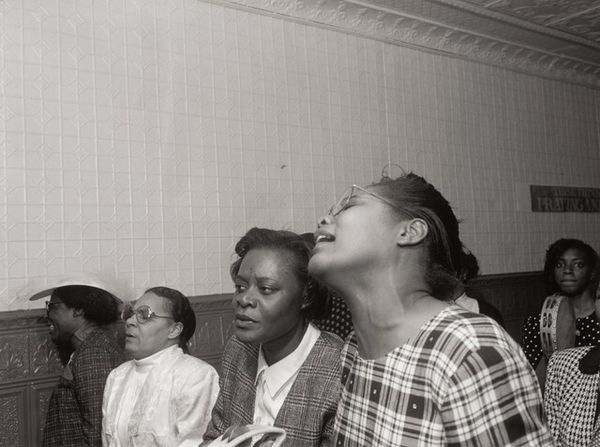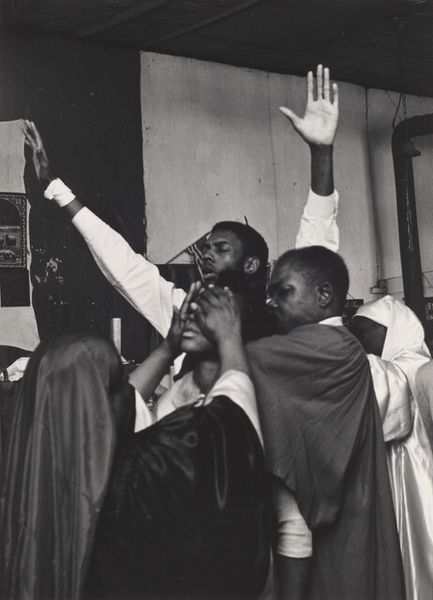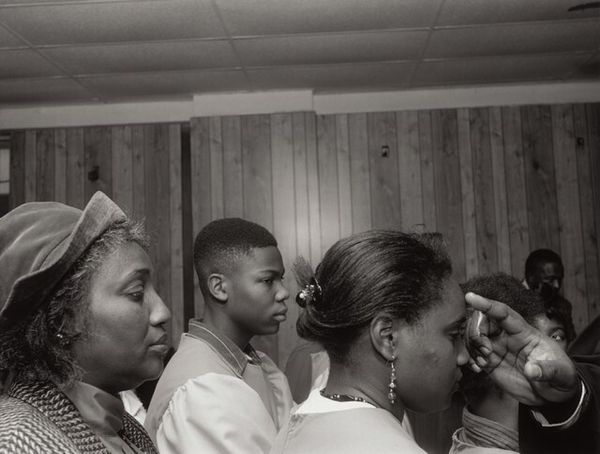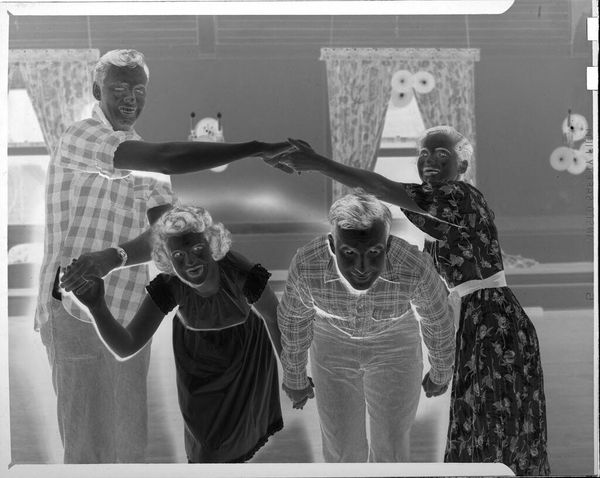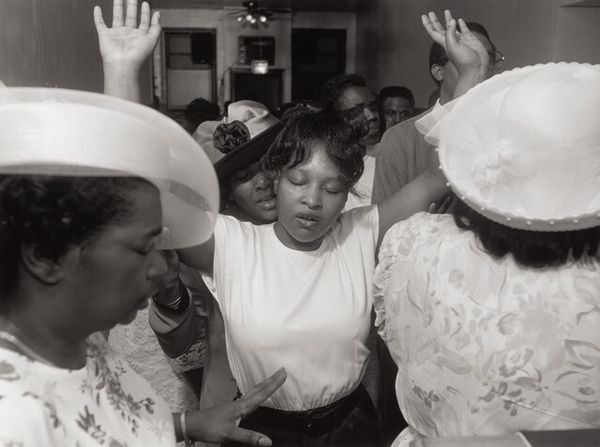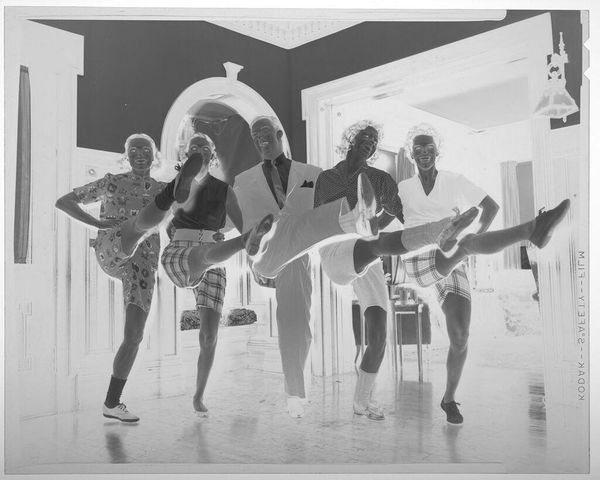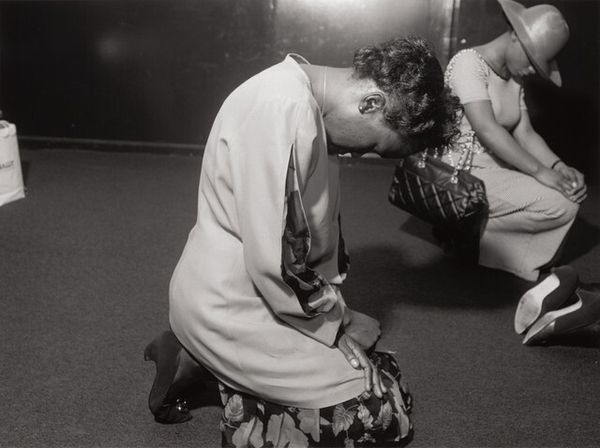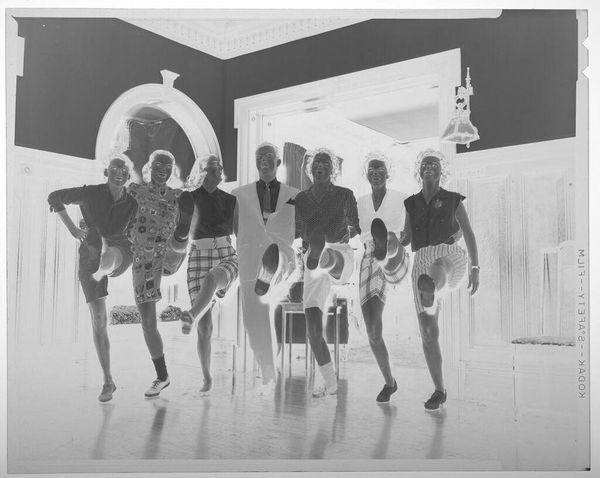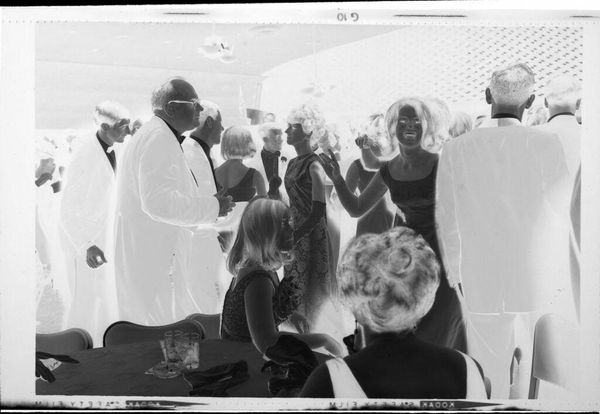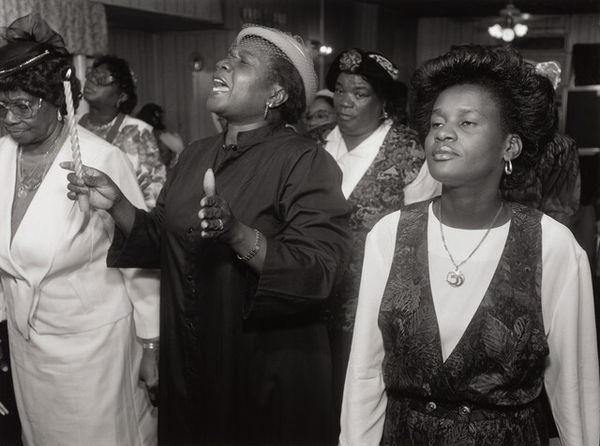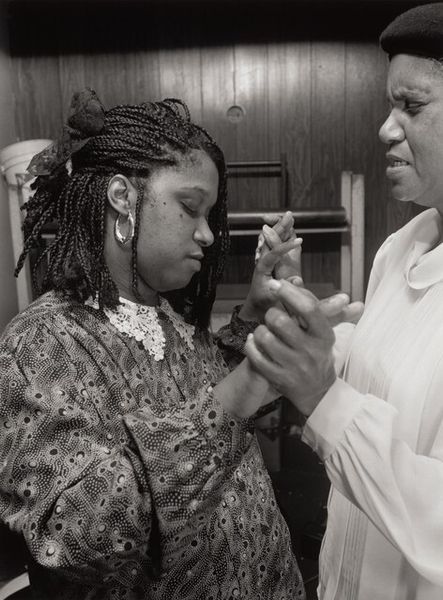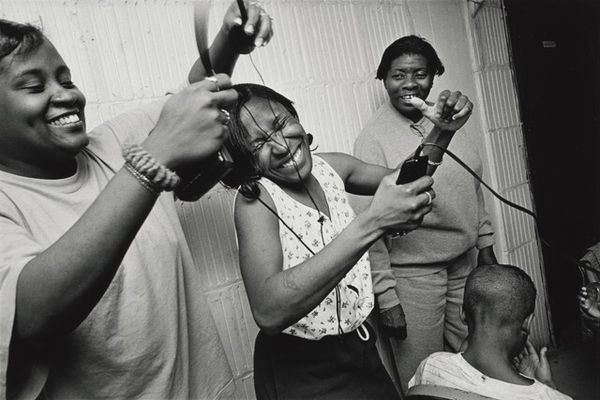
#
wedding photograph
#
wedding photography
#
club photography
#
live stage event photography
#
festival photography
#
festivity and dance
#
culture event photography
#
wedding around the world
#
cultural celebration
#
celebration photography
Dimensions: image: 24.1 × 32.4 cm (9 1/2 × 12 3/4 in.) sheet: 27.94 × 35.56 cm (11 × 14 in.)
Copyright: National Gallery of Art: CC0 1.0
Editor: Thomas Roma's "Untitled" photograph from 1994 captures a poignant moment. These women, heads bowed and hands raised, seem to be caught in a moment of deep emotion. It's powerful, but also a little unclear what's happening. What do you see in this piece, from your perspective? Curator: I see a photograph deeply embedded in its social context. Roma was known for his sensitive portrayals of life within Brooklyn's Italian and Black communities. This image, given its themes of spirituality and community, suggests a specific cultural practice, likely within a church setting. The photograph operates almost like visual ethnography. How might this image function differently, shown within a museum versus, say, a documentary about Black religious life in the 90s? Editor: That's a good point. Displaying it in a museum seems to change its function entirely, highlighting Roma's artistic choices and the emotional impact. What about the history of representing religious expression in photography? Does this relate? Curator: Absolutely. Think about the historical power dynamics inherent in representing marginalized communities. Who is taking the picture, and for whom? How is this imagery being used? We must consider the ethics of representation – does this image reinforce stereotypes, or does it offer a nuanced perspective? Does it invite empathy and understanding, or does it distance the viewer? How do the artistic choices, like the black and white and the seemingly candid capture, impact its perceived authenticity? Editor: It really reframes how I see it, moving from an emotional reaction to a consideration of its role in broader cultural dialogues and power structures. Curator: Precisely. Analyzing art in its social and historical context allows us to understand its complex relationship with the world and the ethical implications of its presentation. Editor: I will keep that in mind. Thank you!
Comments
No comments
Be the first to comment and join the conversation on the ultimate creative platform.
